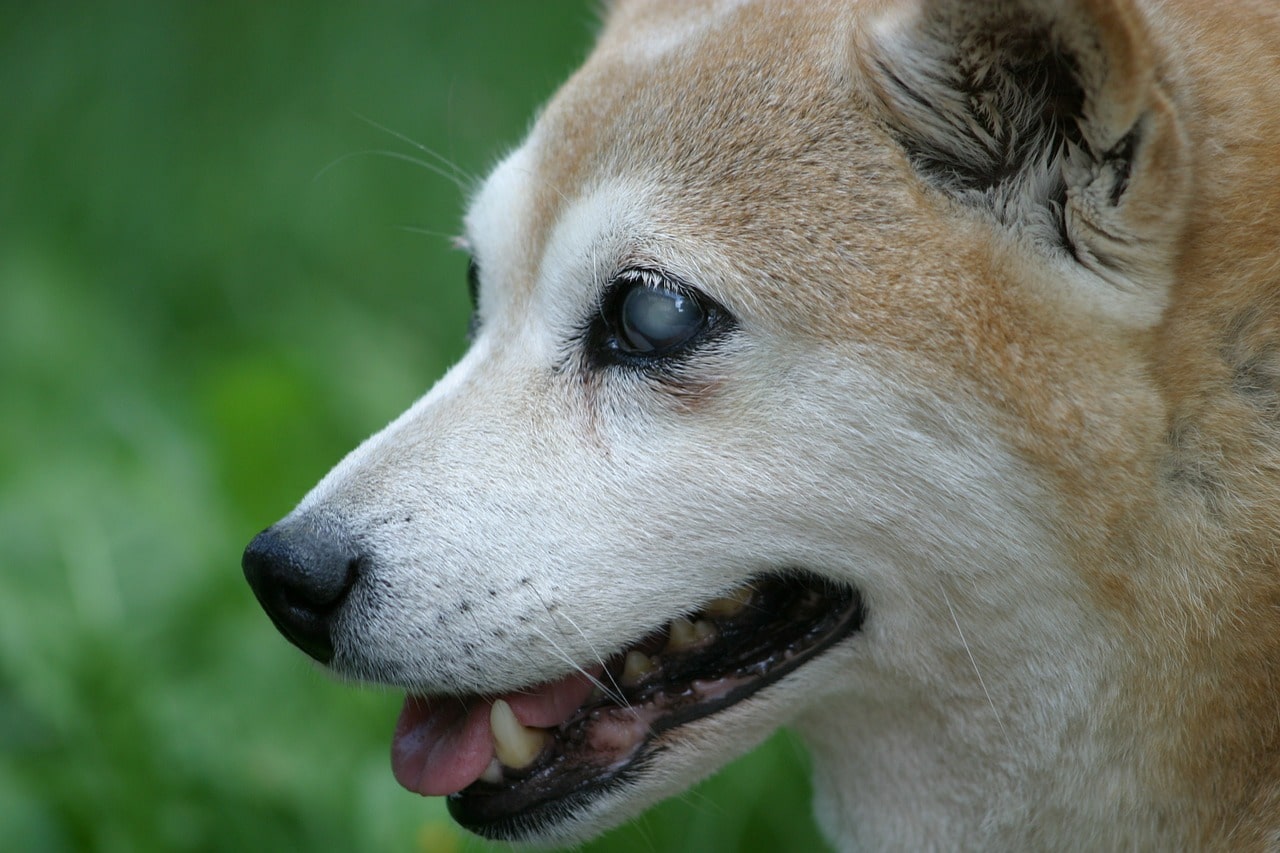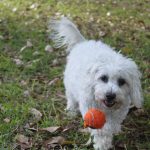Like us humans, dogs may also have physical disabilities, abnormalities, and health-related issues, especially in old age. One of the most shocking health conditions is blindness, hearing loss, or both at a time. These problems can also be a result of an illness.
In many dogs, these conditions are inherited at birth due to genetic issues, most probably, when the dogs are bred irresponsibly. So, whatever the consequences of the dog’s blindness and/or deafness, they should be treated with patience and love.
You may like reading about Groodle dog
In this post, You’ll find necessary info about these two disabilities in dogs, their reasons, and the ways to deal with them or care for them.
Let’s first find out what may be the causes of the dog’s blindness.
Table of Contents
Everything you need to know about Blind Dogs
Causes of Blindness in Dogs:
Several reasons can lead to partial or complete blindness in dogs. These reasons are:
- Old age – For dogs, old age itself is like a disease because the dogs may get several health-related issues including partial or complete blindness.
- Diabetes – It is one of the major causes of blindness in dogs. 1 in every 10 dogs may develop diabetes and about 75% of them lead to full or partial blindness.
- Cataracts – It is, in fact, clouding of the eye lens that results in complete or partial blindness in dogs.
- Glaucoma – A very painful condition for dogs in which increased pressure within the eyeball damages the optic nerve and/or retina.
Check out this specially designed harness for blind dogs
Symptoms of Blindness in Dogs:
There are several symptoms of partial and complete blindness in dogs, and the most common are:
- Bumping into furniture and walls
- Excessive sleeping
- Any minor or major change in the appearance dog’s eyes
- Difficulty in finding food, toys, and other belongings
How to detect Blindness in your dog?
Well, if you find any of the mentioned symptoms in your dogs, don’t waste your time asking others on social media and visit your vet immediately. The vet will conduct a physical exam, as well as, some other tests including a neurological exam, MCR or CT Scan, and an Ophthalmologic exam. The treatment of your dog will further be dependent on its condition.
How to Care for Blind Dogs:
If the dog is losing his vision gradually then he can learn to live with the condition easily, in fact, you may not be aware of your dog’s blindness until you take your dog to a new place. If the dog loses its vision all of a sudden, then you may face a tough time in dealing with him, and in this case, he needs lots of support from you.
So, to take good care of your blind dog, try the following.
- Make sure there are no sharp objects in your home or yard that may have an encounter with your dog.
- If your dog is already familiar with the placement of furniture and other items, try not to change their locations, especially, if they are close to the dog’s walkways.
- Dog-proof your home. Keep everything out of reach of your dog, even if it is harmless to him.
- If you have stairs, swimming pools, or a fireplace in your home, keep all of these areas blocked and inaccessible for your dog.
- Help him to get used to stairs by putting him on a leash and walking by his side on the stairs.
How to train Blind dogs?

A dog can easily be trained even if it goes blind but all this is dependent on its owner. Being a blind dog’s owner, you need to change the way you exercise a normal dog, as well as, you need to teach your dog verbal cues. Moreover, try the following to train your blind dogs.
- Walk and exercises – You may already know that exercise is as important for your dog as food; therefore, you should exercise your blind dog as per your previous routine. While walking your dog, watch for hurdles, obstacles, step-ups, and step-downs, and try to teach him several verbal commands.
- Verbal Cues – Train him to respond to your verbal cues accordingly and offer him a treat every time he responds to the cue.
- Touch and Pressure – A blind dog is totally dependent on his sense of smell, sense of touch, and his human. So, during the training sessions, you can place your hand on your dog and apply slight pressure to teach him a specific command.
Everything you need to know about Deaf Dogs:
One thing to remember here is that the dog’s strongest sense is “Smelling”. You already have witnessed your dog sniffing everything even if he can see and hear. That means, in the absence of hearing and sight, the dog still can live a fair life with the help of his owner.
Now, let’s find the major causes of hearing loss in dogs.
Causes of hearing loss in Dogs:
- Old age – As we have already said, in old age, dogs may develop several medical conditions, and deafness is one of them.
- Injury – Physical injury to the eardrum, ear canal, or brain.
- Exposure to heavy metals – Heavy metals like arsenic, lead, or mercury may also lead to a dog’s deafness.
- Frequent exposure to loud noises – Loud noises like stereo equipment, gunfire, or jet planes if residing near airports.
- Blockage by foreign objects – Grass, fluids, inner hair, or wax may also result in hearing loss.
- Other medical conditions – Diseases like Alopecia or Cushing’s may also lead to hearing loss.
Symptoms of Hearing Loss in Dogs:
The most common symptoms of the dog’s deafness are:
- He does not respond to its name and everyday sounds
- Doesn’t respond to squeaky toys’ sounds
- Would not wake by even a jet engine’s noise and only wake up with physical touch.
How to detect Deafness in dogs?
First of all, you’ll feel a difference in the dog’s reaction to common sounds. Along with that, if you witness the mentioned symptoms in your dog, it’s time to see your veterinarian immediately. He’ll check for your dog’s health and behavioral history and examine his ears physically. Moreover, he’ll conduct the aural and neurological examination.
If your dog’s ear is blocked by a foreign object, it may also develop an infection. Reading a detailed Embrace pet insurance review can be invaluable, offering insights into coverage options that ensure you’re ready to address both routine healthcare and unexpected medical situations for your dog.
How to take care of a deaf dog?

You’ll witness a clear decline in your doggy’s responsiveness, so you must be patient and smart while dealing with him. If dealt with properly, you and your dog can easily get familiar with this health condition.
Given below are some of the handy ways that can be used to take care of your deaf dog.
- The first and the most important thing to do is get your dog a customized collar or a tag that says: “Doggy is deaf, please call (your number) if found. Get Customized Dog Collars.
- You must be knowing that your dog can’t hear any voice including cars and other hazards, so the doggy must be leashed or at least your yard should be fenced so he won’t go outside.
- As your dog can’t hear and respond to your voice, tie a bell with your dog’s color so you can find him easily.
- You can also use a flashlight to get his attention.
- If leaving the house for some time, try to leave when the doggy is awake. Your disappearance, while he is asleep, may disturb him.
Read: How to add more joy to your dog’s life
How to train deaf dogs?
Given below are the proven ways to train deaf dogs. And yes, do NOT forget to reward your dog with the treats if he responds to your signals while training him.
- Tap your foot on the floor and your dog may be attentive towards you because of the vibrations coming through the floor.
- Use a flashlight to signal them. You can use several on-off patterns to train them. Find the best Flashlight for Dogs.
- Use the vibration collars for your deaf dogs. A vibration collar is an electronic collar that vibrates when you press a specific button on its remote. Find the best Vibration Collars for Deaf Dogs (It doesn’t harm your dog like shock collars)
You can also train your deaf dogs using sign language. Create different signs and use them to train your dogs. Keep using these signs until your dog learns to respond to them. Treats and rewards are highly recommended during the training sessions.
How to Deal with a Blind and Deaf Dog?
Well, if your dog is blind and deaf at a time, you have to be more careful and dedicated to him, especially if he isn’t much trained. Once he is trained and familiar with these disabilities, he won’t give you much tough time.
To take good care of your blind and deaf doggy, follow all the instructions we have explained above. Moreover, try the following as he needs something extra from you.
- Wake up early – Yes, you must wake up before your dog to keep him safe from an accident because he is deaf-blind and can’t see and hear at all, so he needs you.
- Handfeed them – In the early stages, you must feed them with your hands. And it is really easy as you just have to touch their food bowl with their chin and rest is their headache.
- Air Fresheners – Use different air fresheners and fragrances to create an in-house trail, especially if you are living in a larger house. This will help your dogs to get familiar with the surroundings of your house by recognizing these fragrances.
Final Thoughts:
So, guys, these were some ways to deal with your four-legged companion with sight and hearing impairment. If you already have a dog with such medical conditions and you are taking good care of him, you are a superhero. And if you have decided to adopt a deaf, blind, or deaf-blind dog, we salute you for this humble decision.
You may like reading: A Complete List of Human Foods Your Dogs
Image credit: John












1 thought on “How to Take Care of Deaf and Blind Dogs”
My x-wife has a blind-deaf dog, rat terrior…and I feel so bad for it…. I wish even just one eye could get fixed to give this dog its life back…